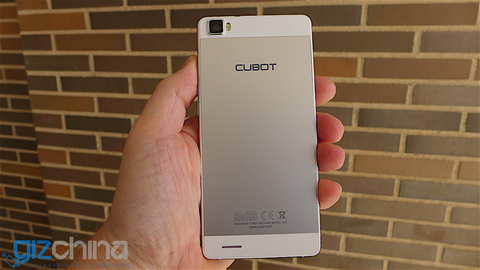Cubot launch another low-cost but well made smartphone in time for the holidays. Take a look at the Cubot X17 in this unboxing and hands on video.
Cubot are now offering 2 slim phones made with metal chassis that look like phones that should be double the price. Those phones are the Cubot X16 (see our unboxing here) and the updated Cubot X17.
Cubot X17 First Impressions
Before getting your hands on the Cubot X17 you should take a look at the spec sheet of this phone vs the Cubot X16. Have a good study of each device and you will quickly learn that there is no major difference between the two phones.
In fact its just the outward design of the X17 and X16 which differs from one another making your shopping decision all the more easy. Just choose the one that you prefer the design off. That in itself might prove difficult as they both look rather good in the hand.
The Cubot X17’s design features a 5-inch JDI panel, capacitive buttons and a slim metal chassis. Although slim and compact the Cubot X17 is a heft device (for the size), that weight coming from the steel chassis. More expensive phones might have an alloy CNC chassis instead, but I actually prefer the slightly heavier design of the Cubot, if feels substantial and gives me a sense of durability.
As with most Android phones designed in China during 2015, the Cubot X17 has a black bezel around the display, so although the phone appears to be bezel-less it isn’t. A lot of you are going to dislike this about the phone, but really in use you don’t notice it.
Cubot are sticking with a standard micro USB for charging the 2500mAh battery. I’ve not had time to see how well the battery lasts in the phone, but I’m hoping it will cope with the FHD panel due to the low-frequency quad-core chipset on board.
The rear of the Cubot X17 is where the major design difference between it and the X16 are notable. The X17 has an alloy rear that looks like an older Vivo design. In fact the protruding camera and dual LED flash look very Vivo too.
As the rear of the phone is non removable your Micro SIM cards (or Micro SIM + SD card) are inserted via the SD tray on the left side of the phone. A power and volume button located on the right and a 3.5mm headphone jack in the top.
Cubot X17 Specs
While the Cubot X17 does have just a 1.3Ghz Mediatek MT6735 quad-core chipset on board, the display is a FHD 1920 x 1080 panel, there is 3GB RAM on board and internal memory is 16GB. Not at all bad!
The camera specs on the packaging of the Cubot X17 state the rear camera is a 16 mega-pixel sensor while the front is 8 mega-pixels. I don’t believe this to be the actual sensor specs but rather the interpolated specs, and I think what we have is a 13 mega-pixel rear and 5 mega-pixel up front (still nothing to be sniffed at).
Bands 1/3/7 and 20 are supported for LTE and you have the option of running either dual SIM cards or a single SIM and up to 32GB SD card.
Cubot X17 First Impressions
A great build, good quality and solid specification! The Cubot X17 is a real surprise phone. If you are after a phone that has the beauty of a Vivo but at a fraction of the price this is one to look at.
Follow Gizchina.com on Google News for news and updates in the technology sector.

It’s not that overpriced, yet this is that kind of device you buy for the look and build, and many devices from this category have often underwhelming performance… So it’s not the best deal possible, but all in all it’s a good thing they focused not only on design but on performance too!
I though that too, and probably the third gb is more like a gimmick, so yeah, an octacore maybe would have been more fitting… But again: if the smartphone has good performance, it’s not the case to complain! Let’s see how it goes with Andy’s review
Please read your topic before posting it, It starts as a micro-SIM and finally it is a Nano-SIM. Please enlighten us.
If you don’t mind, I’d like to see in the final review a comparison between the real 13mpx resolution and the 16mpx interpolated one!
i’d like to see a teardown and in-depth sensor model inspection
Don’t think it works that way, once interpolated it adopts the given size so reducing it down to the native sensor size rarely gives real improvement, you’re still getting interpolation, just upwards then downwards, real/native is gone. That’s why I don’t like interpolation, it’s not an option once implimented.
I don’t know… I’ve always thought: since it’s done by software, it can be undone the same way around! But I’ve never had an interpolated camera, so i don’t know how it exactly works!
That’s what I used to assume as it sounds logical, but it doesn’t seem to work in practice. Also interpolation wouldn’t be an ‘issue’ on camera phones if it that was easy to fix, it would be a bonus (in effect), but no one looks at it like that.